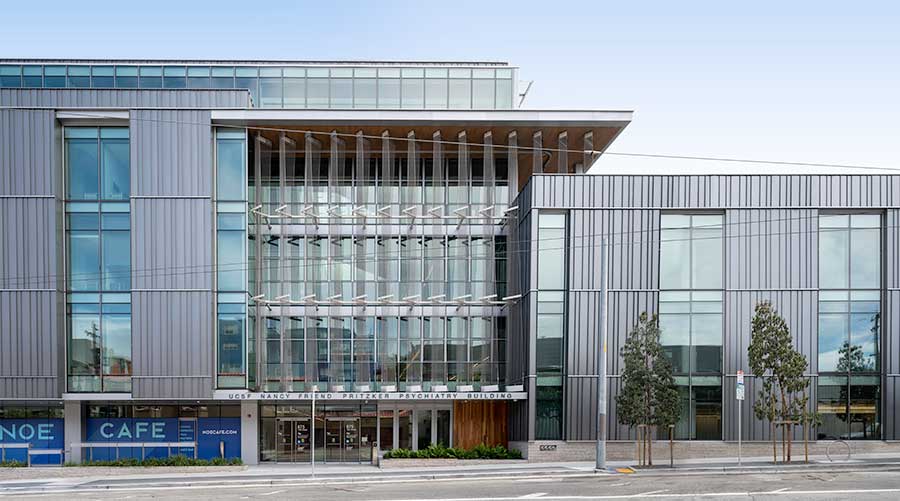The University of California San Francisco (UCSF) is welcoming its first patients to the Nancy Friend Pritzker Psychiatry Building, a treatment center that aims to redefine mental health services. The five-story,150,000-square-foot building represents a visible departure from older psychiatry facilities, many of them located in secluded places with obscured facades. Situated adjacent to UCSF’s Mission Bay campus, the new building’s central location and proximity to transportation hubs, together with its light-filled atrium and interior transparency, signal openness to the community outside, as well as within the building itself.
The building is the culmination of a longstanding vision to bring together physical and mental health at UCSF and eliminate the boundaries that have isolated psychiatry from disciplines that advance brain health and treat brain disorders.
The building combines outpatient mental health care for people of all ages with top-ranking programs in psychiatry and psychology training. It includes a center for pediatric, adolescent and family health care, and promotes collaborative research across psychiatry, psychology, neurology, neurosurgery, radiology, pediatrics, anesthesiology and obstetrics/gynecology under one roof.
Designed by ZGF Architects with input from more than 100 UCSF faculty and staff, the building includes: the Child, Teen and Family Center, with its own child-friendly entrance; a rooftop garden accessible to patients and staff; art by photographer Richard Misrach alongside a community-based youth art program; a therapeutic kitchen for families of patients with eating disorders; and a gym to evaluate children with neurodevelopmental disorders.
The building also will have two ultrasound machines that deliver noninvasive ultrasonic beams to targets deep within the brain, which may alleviate depression in patients who have not responded to medication. There is a sleep clinic, a neuroimaging suite with cutting-edge technology and dedicated space to evaluate new therapies for some of the most intractable psychiatric disorders. It also includes an auditorium and conference center for world experts to convene and advance the field.

 Building Sustainable Healthcare for an Aging Population
Building Sustainable Healthcare for an Aging Population Froedtert ThedaCare Announces Opening of ThedaCare Medical Center-Oshkosh
Froedtert ThedaCare Announces Opening of ThedaCare Medical Center-Oshkosh Touchmark Acquires The Hacienda at Georgetown Senior Living Facility
Touchmark Acquires The Hacienda at Georgetown Senior Living Facility Contaminants Under Foot: A Closer Look at Patient Room Floors
Contaminants Under Foot: A Closer Look at Patient Room Floors Power Outages Largely Driven by Extreme Weather Events
Power Outages Largely Driven by Extreme Weather Events